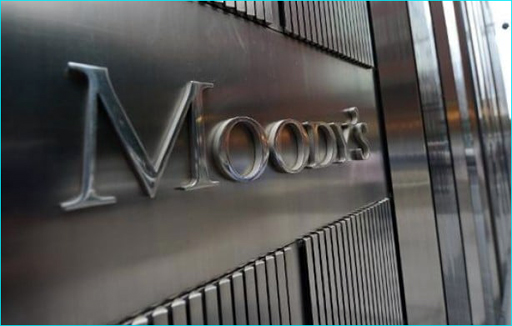Moody’s Ratings upgrades Pakistan’s ratings to Caa2; changes outlook to positive
Singapore: Moody’s Ratings (Moody’s) has today upgraded the Government of Pakistan’s local and foreign currency issuer and senior unsecured debt ratings to Caa2 from Caa3. We have also upgraded the rating for the senior unsecured MTN programme to (P)Caa2 from (P)Caa3. Concurrently, the outlook for Government of Pakistan is changed to positive from stable.Pakistan to sell $500m green Euro bond
The upgrade to Caa2 reflects Pakistan’s improving macroeconomic conditions and moderately better government liquidity and external positions, from very weak levels. Accordingly, Pakistan’s default risk has reduced to a level consistent with a Caa2 rating.
There is now greater certainty on Pakistan’s sources of external financing, following the sovereign’s staff-level agreement with the IMF on 12 July 2024 for a 37-month Extended Fund Facility (EFF) of $7 billion. We expect the IMF Board to approve the EFF in the next few weeks. Pakistan’s foreign exchange reserves have about doubled since June 2023, although they remain below what is required to meet its external financing needs.
The country remains reliant on timely financing from official partners to fully meet its external debt obligations. Pakistan’s Caa2 rating continues to reflect Pakistan’s very weak debt affordability, which drives high debt sustainability risk. We expect interest payments to continue absorbing about half of government revenue over the two to three years. The Caa2 rating also incorporates the country’s weak governance and high political uncertainty.
The positive outlook reflects a balance of risks skewed to the upside. It captures the possibility that the government is able to further lower its government liquidity and external vulnerability risks, and achieve a better fiscal position than we currently expect, supported by the IMF programme.
Sustained reform implementation, including revenue-raising measures, can increase the government revenue base and improve Pakistan’s debt affordability. A record of completing IMF reviews on a timely manner would also allow Pakistan to continually unlock financing from official partners, sufficient to meet its external debt obligations and support further rebuilding of its foreign exchange reserves.
The upgrade to Caa2 from Caa3 rating also applies to the backed foreign currency senior unsecured ratings for The Pakistan Global Sukuk Programme Co Ltd. The associated payment obligations are, in our view, direct obligations of the Government of Pakistan. The outlook for The Pakistan Global Sukuk Programme Co Ltd is positive.
Concurrent to today’s action, we have also raised Pakistan’s local and foreign currency country ceilings to B3 and Caa2 from Caa1 and Caa3, respectively. The two-notch gap between the local currency ceiling and sovereign rating is driven by the government’s relatively large footprint in the economy, weak institutions, and high political and external vulnerability risk.
The two-notch gap between the foreign currency ceiling and the local currency ceiling reflects incomplete capital account convertibility and relatively weak policy effectiveness. It also takes into account material risks of transfer and convertibility restrictions being imposed.
Please click on this link https://www.moodys.com/viewresearchdoc.aspx?docid=PBC_ARFTL494378 for the List of Affected Credit Ratings. This list is an integral part of this Press Release and identifies each affected issuer.
RATINGS RATIONALE
RATIONALE FOR THE UPGRADE TO Caa2
GOVERNMENT LIQUIDITY AND EXTERNAL VULNERABILITY RISKS HAVE REDUCED FROM VERY HIGH LEVELS, BUT NOT ELIMINATED
Our earlier concerns over very high risks of a balance of payments crisis materializing have diminished, although risks remain elevated as Pakistan continues to rely on timely and sufficient disbursement of financing from official partners.
There is now greater certainty over Pakistan’s sources of financing to meet its needs over the next two to three years, following the IMF staff-level agreement reached on 12 July 2024. We expect the IMF Board to give its approval for the new 37-month Extended Fund Facility (EFF) worth $7 billion in the next few weeks. The IMF programme is likely to support Pakistan in unlocking additional financing from other multilateral and bilateral partners.
Pakistan’s foreign exchange reserves have also about doubled since June 2023, owing to the country’s creditable performance under the previous nine-month IMF Standby-Arrangement (SBA) that ended in April 2024, which has supported macroeconomic stability and driven renewed external financing for the country. Pakistan’s foreign exchange reserves stood at $9.3 billion as of 16 August 2024, equivalent to just below two months imports. This compares with only $4.4 billion available at end-June 2023.
Nonetheless, Pakistan’s foreign exchange reserves are well below what is required to meet its needs, underscoring the importance of steady progress with the IMF programme to continually unlock financing to meet its needs. We estimate Pakistan’s external financing needs to be about $26 billion for fiscal 2025 (ending June 2025), comprising of around $22 billion of external principal debt repayments in fiscal 2025 and another $4 billion (about 1% of GDP) to finance the current account deficit. Pakistan’s financing needs for fiscal 2026-2027 will be similar.
We expect Pakistan to be able to cover its financing needs with funding from official partners, although there remains uncertainty around the government’s ability to sustain reform implementation. The coalition government formed after elections held in February 2024 may not have sufficiently strong electoral mandate to continually implement revenue-raising measures without stoking social tensions. Slippages in reform implementation or results could lead to delays in or withdrawal of financing support from official partners.
Interest payments consumed about 60% of government revenue in fiscal 2024. We expect interest payments to account for 55-60% of government revenue in fiscal 2025, before declining to about 45-50% in fiscal 2026-2027. At these levels, Pakistan’s interest payments as a share of government revenue will still be one of the highest among rated sovereigns.
Pakistan’s government debt to GDP is high, albeit slowly declining, on the back of high nominal GDP growth and modest fiscal consolidation. The government seeks to achieve significant fiscal consolidation mainly through increases in tax revenue, which it projects would be 40% higher in fiscal 2025 than a year ago in nominal terms. The government estimates its fiscal deficit at 5.9% of GDP and primary surplus at 2.0% for fiscal 2025 (fiscal 2024: 6.8% deficit and 0.9% surplus, respectively).
We expect the pace of fiscal consolidation to be slower than the government envisages, as large and successive tax increases could drive an increase in social tensions, leading the government to temper its pace of fiscal consolidation. We project a larger fiscal deficit of about 6.5% of GDP and smaller primary surplus of around 0.5-1% of GDP for fiscal 2025.








